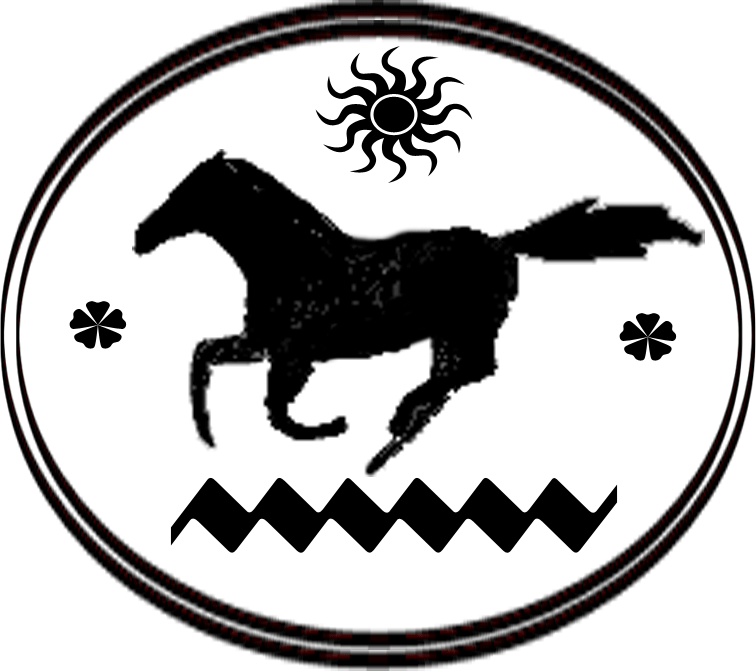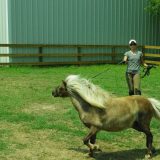How to Train Your Horse to Ride Bareback
Do you need to train your horse to ride bareback or you can just ‘get on and hold on’ without any ground work?
Many generations of equestrians around the world have and still do ride bareback. In ancient times, people had to learn to ride bareback first because back then they did not have saddles or even stirrups.
Domestication of horses was naturally a very lengthy process which lasted probably for thousands of years and horses were ridden bareback all the time.
So it is completely natural to ride your horse bareback.
To train your horse to ride bareback, first work on trust with your horse, get a good bond with her (or him) because if you trust your horse, your horse will trust you.
Unfortunately today most credits are given to saddle riding when actually bareback riding is a much more genuine communication between horse and rider. Some experienced equestrians see the saddle as a clear interference in the language between rider and horse to the point that the horse cannot feel rider’s subtle commands; it forces rider to accentuate cues in order to be felt by the horse. Same applies the other way round, where the rider cannot ”read” the signals the horse is sending to the rider before making its decisive move.
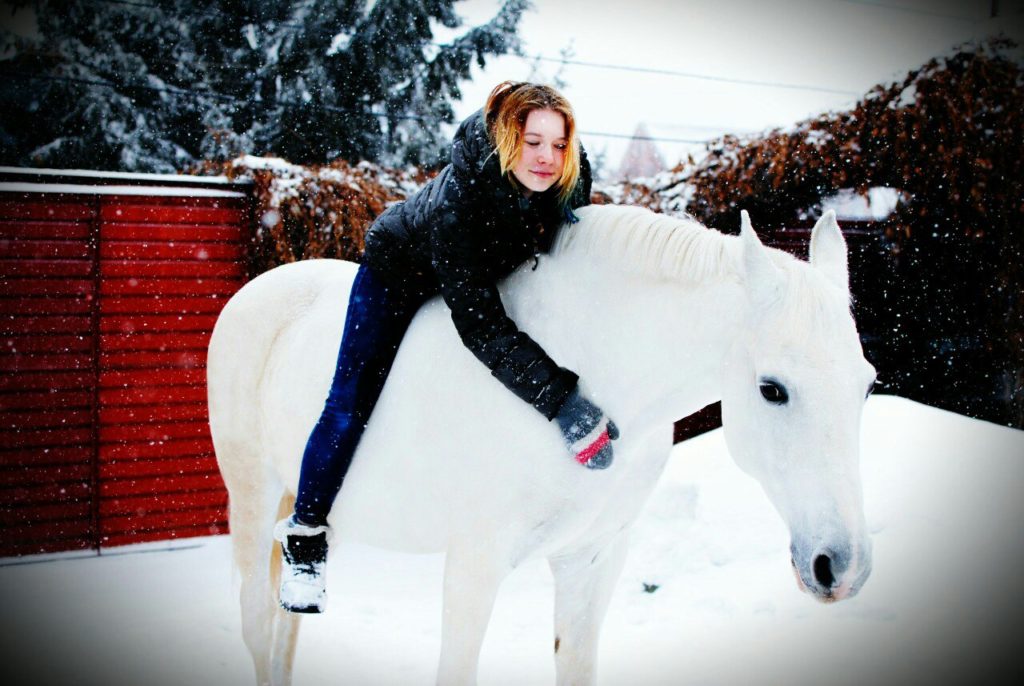
Bareback riding enable more thorough communication between horse and rider and is a great exercise for the rider. You definitely can ride a horse without a saddle with time and practice.
Bareback riding is different from riding with a saddle. Bareback riding requires the rider to have a greater sense of balance than with a saddle and better muscle strength in the thighs. Also the rider should have more trust in the horse than using a saddle.
To prepare yourself and your horse for riding bareback you also have to master an independent seat which means that you have to be able to connect continuously to the horse’s movement and remain in balance without the support of the rein contact. Lunge lessons are ideal to start with. Bareback riding is where you learn if you are really riding, or just hanging on via stirrups. I strongly suggest getting some bareback lessons on a longe line first. Some beginner riders start in a saddle for the first lesson or the second, depending on their confidence and balance, then put themselves up there bareback on the longe line. This takes away the need for the rider to worry about controlling the horse, and he (she) can focus on learning to balance and stay on the horse’s back.
If you do not have access to that you need to be able to ride at all gaits on a completely loose rein.The next step would be dropping the stirrups. When you do start bareback a neck strap is important, so if you do lose your balance you have something to support you besides the reins.
If you have never ridden a particular horse bareback be careful, some horses associate the pressure of the girth with being ridden and will react violently to being mounted without. A surcingle or bareback pad without stirrups would be a good intermediate step. These bareback pads potentially can help with dispersing the pressure of the rider, however there are mixed feelings on their actual benefits among professional riders, so be careful using them. Another consideration is your weight and the health of your horse’s back. A rider puts a more concentrated point of pressure when bareback especially at the trot. A heavy rider, a horse with back problems, a significant sway back, or just weak muscle tone can result in pain. Finally be careful with grooming products, some can make the horse quite slippery.
Bareback is a good exercise for your balance and it’s good for helping to feel the horse underneath of you. It can help you a lot in your riding and many professional riders think that it does improve riding in general.
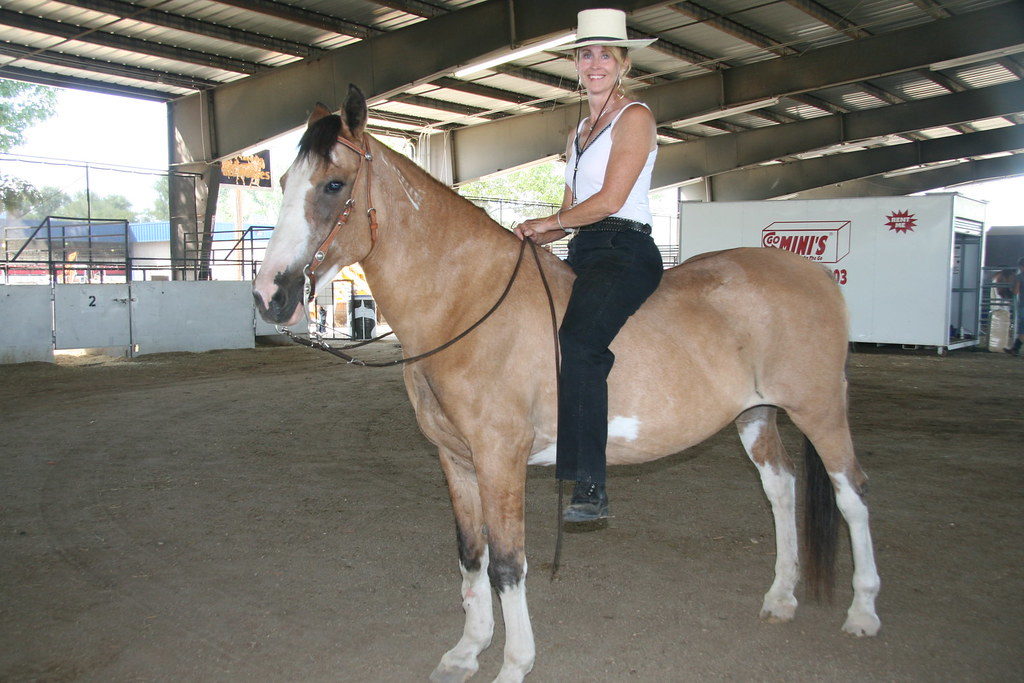
Groundwork
You need to train your horse for riding bareback because it is crucial that he or she is very familiar with your touch. Just move around your horse’s body touching her everywhere. In this way she gets used to your direct touch. You want the horse to stand completely still because that way it will help you with safe mounting on her bareback. Be very relaxed and confident and talk to the horse while gently touching her body. It gives the horse a better attitude because all horses can feel your mood and fear (or confidence).
Mounting the horse
This is a very important step to train your horse bareback riding. Put your hand on the horse’s back and start touching the horse around where you intend to jump onto her. When the horse is very comfortable with that, start jumping up and down next to the horse before you actually jump onto her. When your horse is comfortable with that then you can mount her but not all the way. Go half way first and lean onto her. Doing it this way gets the horse used to direct pressure on her back and you still have a quick escape if she does react negatively. When the horse is comfortable with that you can go and caress your horse and then back off her.
After the horse is really comfortable with all the jumping around and getting halfway on you can now mount all the way onto the horse.
I usually gently stroke my horse a lot to ensure that the horse stays completely still because when you don’t have a bridle you are going to depend on your ability to hold the horse still to ensure safety.
Take your time and be positive when you are ready to get on. If anything, it’s easier to dismount then a saddle if need be.
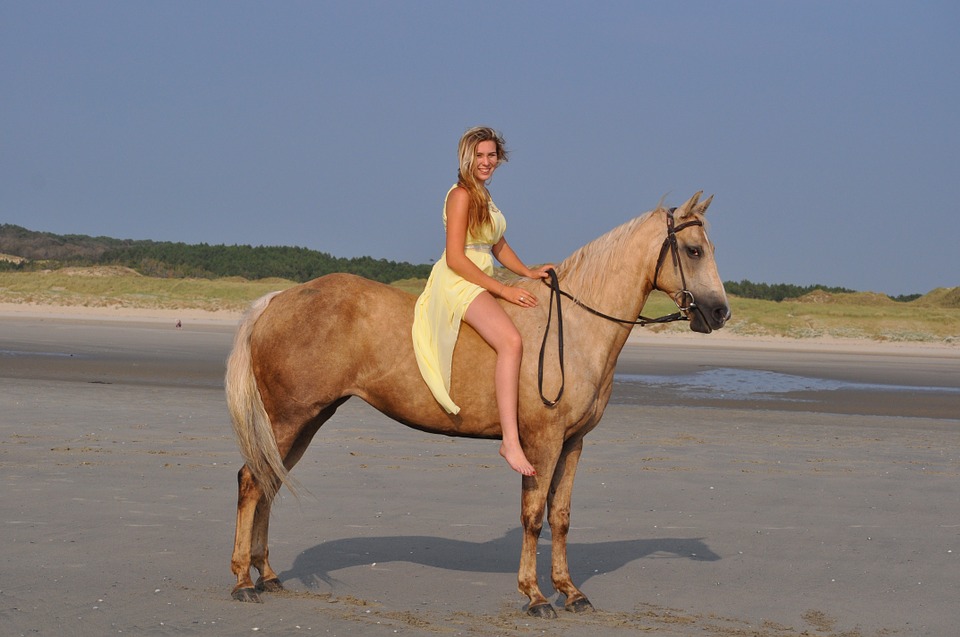
On the horse
Now when you are ready to ride bareback put on your riding helmet because safety is the number one priority.
Let your legs drop nice and low and keep your upper body slightly lifted. Don’t sit bareback completely relax with your shoulders dropped and your body sinking down because it is going to make you more uncomfortable and this posture puts more strain on your lower back. Do not slouch! A lot of people when riding bareback slouch however this is bad for your back as well as your horses back. So keep a strong core, keep yourself lifted with your chest open. Make sure you’re still engaging your core and stay nice and tall as you ride bareback.
Riding bareback is a good way to practice lateral work. You can feel lifting of the back and where their muscles are and which muscles you are engaging. Your leg is going to end up a little farther underneath of you especially when you are cueing the horse for example when you are asking the horse to move forward.Try not to grip with your legs because it will negatively affect your balance. Try instead leaving the legs loose balancing through your seat and keeping the core strong to help maintain correct tall position with a flat back.
If you are new to bareback riding or feel that your balance or weight may be bad for your horse, begin adjusting yourself in a few minutes every now and then to get both yourself and your horse used to bareback riding. Once you become more balanced and better able to hold yourself, you can spend more time on your horses back.
Transitions using vocal and seat demands
Walk to trot
I’m just applying normal leg pressure as you would in the saddle.
Trot to canter
I usually apply usual canter aids of the inside leg forward and the outside leg back.
Canter to trot
I relax all of my body and I elongate my legs basically saying ‘whoa’ to the horse.
Trot to walk
I relax my body.
Walk to stop
To my surprise this is one of the harder gates. I just say whoa and relax, then lean back and stand still and calm.
Directing the horse using leg demands
Starting off at a walk I usually work in a sort of figure eight fashion. I apply the outside leg to turn inwards and I’m putting leg a bit and then my inside leg is at the girth position on the belly.
If you work well with the bridle first getting the horse very used to the legs demands it will become almost a subconscious act and the horse will respond nicely to your legs.
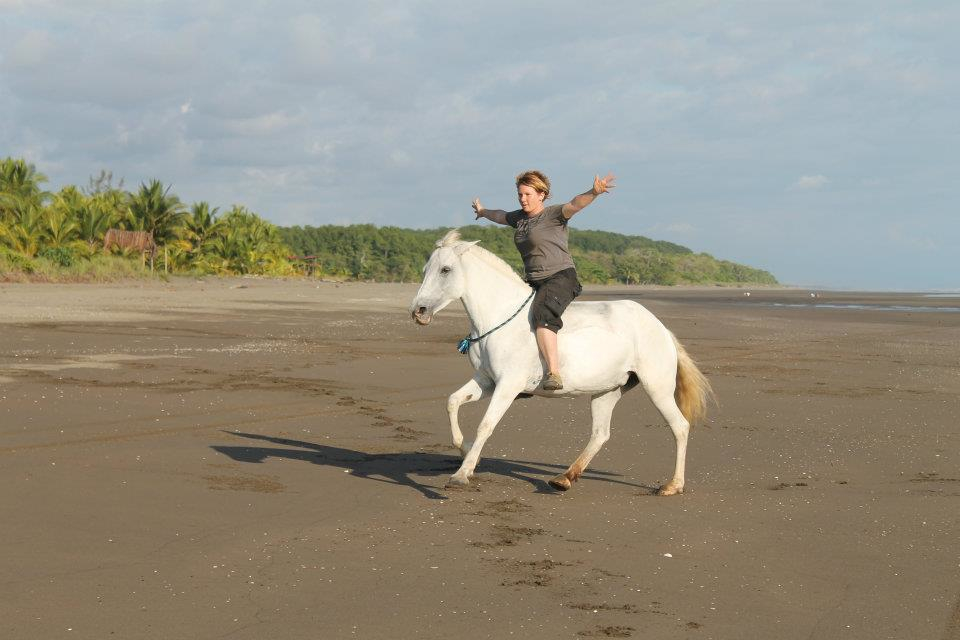
Jumping an obstacle without saddle or bridle
To jump the horse without bridle or saddle you must first have to work the horse a lot with a bridle. Then you can start with a bar on the ground and then slowly move up. It’s important to point out that to jump a horse without a saddle is very different than to jump a horse with a saddle and the bridle. So before taking off the bridle and the saddle make sure that you are completely confidant doing that. The height is up to you but it is wise to move up slowly from a small jump to higher one and really do what you feel comfortable doing. You can invest some cash in special wooden bar standards to train your horse to jump.
